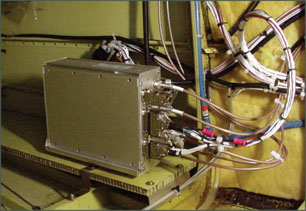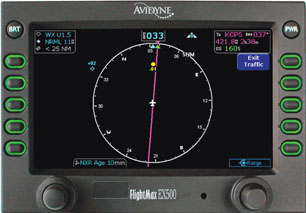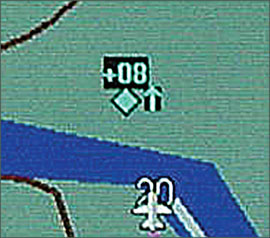
by Larry Anglisano
One of the hazards of covering cutting-edge avionics is that whats hot one month, might very we’ll be obsolete the next. Thats not quite the case with the traffic alerting gear we covered in the November 2005 issue of Aviation Consumer, but the market has definitely shifted in just a couple of months with Avidynes merger with Ryan International.
As we noted in the November report, real-time, active traffic alerting equipment is the best choice for pilots who are paranoid about swapping paint with another aircraft. Its also so expensive that many owners simply wont consider it. And at $20,000 or more for an installed system, we don’t blame them.
But Avidyne and Ryan have just introduced an active traffic system that fills the price point wasteland between inexpensive portable or Mode-S-based TIS systems and high-dollar boxes based on expensive TCAS technology. We predict theyll find plenty of buyers, given the number of owners who ask us about these systems.
Avidyne and Ryan are a natural pair, in our view. Avidyne is a well-regarded veteran of the cockpit display wars and Ryan has been plugging away at traffic systems, carving a respectable share in what is by no means an easy market in which to sell. The new product is called the TAS600 and its being marketed in a three-tier approach, with a price point for every buyer.
Market Savvy
In our view, the introduction of the TAS600 series represents more of a marketing breakthrough than fresh new technology in active traffic equipment. All of the traffic systems now offered in the Avidyne line represent trickle-down technology from Ryan thats we’ll proven. The new Avidyne products are comprised mostly of technology carried from the previous Ryan line-they simply have new nomenclature, new pricing and the Avidyne name. Hardware remains largely the same, except for traffic range capabilities, which, as we’ll see, is proportional to price. But price is the major development here.
The Ryan/Avidyne merger created the Safety Systems Group, a new division within Avidyne that remains based at the previous Ryan factory in Columbus, Ohio. Traffic system product support and marketing will also reside there. In-depth technical support of the new combined product line of Avidyne FlightMax MFDs and Ryan traffic equipment remains an unknown, but both companies have good track records. We hope to see a seamless interface between the two product lines, if not an improvement in the way Avidyne handles its orders to dealers, an area Ryan has perfected, in our experience. Although owners don’t see this aspect of the business, engineering support for shops doing the installation work is critical. Without it, the work is delayed and the customer does see that.
One immediate result of the merger is what Avidyne is calling the MHAS6000, for Multi-Hazard Avoidance system. The Avidyne traffic products on the widest variety of displays already, but now Avidyne is offering its own complete system to compete with the Honeywell Bendix/King IHAS line.Avidynes version is driven by a 7.2-pound single remote processor that measures 3.1 by 7.25 by 11.675 inches and is compact enough to secure to most airframes. It plays we’ll with many displays through ARINC and RS232. The box is sold sans display; you pick the display you want or use one you already have.
New Lineup
There are three products in the Avidyne traffic line, all of which use active surveillance, meaning they interrogate other transponder-equipped aircraft. They all use the familiar Ryan top-and-bottom mounted antenna array, they all track up to 50 traffic targets and can display nine of the most critical. All of them also use voice annunciation; what Avidyne calls heads-up audible positioning. This means the box audibly calls relative range, bearing and altitude of conflicting traffic, with N-number traffic tags and target transponder squawk when available.
These are feature-rich traffic products that go we’ll beyond early generation passive boxes and competing TAS systems that simply announce traffic, traffic to warn of potential conflicts. Interestingly, each of the three traffic systems is directly marketed and technically focused toward a specific class of aircraft, priced appropriately for each class.
Avidyne scaled back the price and performance of Ryans flagship 9900BX product to suit a broader range of budgets without sacrificing any of the useful features found in this box. The result is the TAS600 focused directly at modest single-engine piston aircraft. It has a 7-mile range, 18,500-foot service ceiling and +/- 3500 feet of vertical separation criteria.
Normally aspirated Mooneys, Cessna 182s, Arrows and the Beech Debonair would be typical target applications.

Despite hopeful claims from some owners, these modest airplanes don’t come close to 200 knots in controlled flight, eliminating the need for a traffic system that can calculate 1200-knot closure rates at a range greater than 7 miles. And not many are likely to fly above 18,500 feet. At $9900, the entry-level TAS600 represents a good bargain for entry-level aircraft. No other active system comes close in overall value.
The TAS610 kicks the performance up a notch, with 12-nautical mile range, a 25,000-foot ceiling and +/- 3500 feet of vertical scan. Light twins, turbocharged singles and small helicopters are the target market for the TAS610. At $14,990, it might stretch the budget of some, but we still think its priced appropriately for a Baron, twin Cessna and most high-flying piston twins and singles that routinely ply the teens, pushing 200 knots.
One sour note: Even if you want to install the lower-priced TAS600 in an aircraft certified to fly above 18,000 feet, you cant. For one thing, the shop probably wont get FAA field approval and second, the software will lock out operation above 18,500 feet. Were sure some owners will have heartburn over this, but this appears to be the only way the FAA would certify the system.
The flagship Avidyne TAS system is the TAS620, previously known as the 9900BX. With a 21-nautical mile range, +/- 9900 feet of vertical scan and a 55,000-foot ceiling, the TAS620 is obviously for high-end aircraft, from speedy jetprop singles and twins to bizjets and transport helicopters. At $20,990 it represents the same price and performance points covered by the L3 Skywatch system and basic TCAS.
Air and Ground
We recently flew a fresh installation of the TAS620 and EX500 in a Beechcraft. The system called a lot of traffic and accurately.Interestingly, the aircraft was also equipped with a Garmin GTX330 Mode-S transponder playing TIS traffic on a GNS430. As we expected, the active, real-time TAS620 showed the traffic in slightly different positions than the TIS, making us dance in our seats twice as often. If anything else, it showed that active traffic alerting is more accurate and reliable than TIS because the latter suffers from processing delays as ATC radar sweeps and updates.(We still think TIS is a good-value basic traffic system, however.)
The TAS620 and all the other TAS systems in the Avidyne line use a top and bottom antenna, making the overall installation an involved, costly affair.In the Bonanza we flew, old coaxial cable had to be replaced with low-loss cable to stifle any stray RF that might interfere with the traffic system.Some existing antennas needed to be relocated to accommodate the TAS620 antennas.
There’s also an optional weight-on-wheels interface that allows the system to sense when the aircraft touches down, automatically suppressing nuisance traffic callouts while operating on the ground after rollout and during taxi.Some aircraft might need an airspeed pressure switch interface as well, sensing low airspeed instead of weight on wheels when that wont work in an airplane without resorting to complicated and costly relays.
Similarly, interface with the aircrafts retractable landing gear is also possible, to automatically change the systems sensitivity during descents and climbs. These types of optional interfaces can add a sizeable effort and cost to an installation, so be clear with the shop on the bottom line. A control-yoke-mounted traffic mute/redraw switching adds finger-tip control to the system and more work and money to the invoice.
For playing the traffic alert audio, we suggest a modern audio system, such as the Garmin GMA340 or PSEngineering PMA8000. Both have switched inputs, providing the pilot with an option to switch the traffic callouts out of the headphones when appropriate. Our experience is that passengers become uneasy as the system is calling traffic in congested areas with the pilot nervously scanning for visual contact.
Display Options
Avidyne and Ryan appear to have engineered this system right but whats most right about it is the number of displays it will play on. This can be a little confusing so keep in mind that the basic remote box will drive just about any screen display and which one you select-or what you already have-will impact the installation cost. For the TAS600 and up, you can use any of Avidynes FlightMax displays, the Entegra PFD, the Garmin G1000, 400/500 series and MX-20 MFD and Bendix/Kings KMD550/850 series. Even display technology from smaller players such as OP Technologies, Cheltons Sierra, Sagem and Meggit are supported, to name a few.
Also on the display option list are Ryans own digital display and 3ATI display, pictured on page 11. The digital display is a small rectangular unit limited to numerical display. We don’t think its good choice so the more sophisticated displays are the way to go. All of the displays use standard traffic symbology, regardless of which TAS model is installed. What varies is the aforementioned range and vertical volume.
A note on the traffic display on the EX500: We think the traffic tag is difficult to see and were not alone. A few users with less-than-perfect eyesight tell us that reading the traffic data inside the black boxes on the screens base map is a struggle, mainly because of the size of the text. This might be more of an issue in a Beechcraft with the stack displaced toward the right of the panel, but we still think the graphic design can be improved.

Avidyne tells us that there’s a TSO-specified size for the traffic tag and that the TAS600 and EX500 displays comply with it. We would like to see users given the option of increasing the size of the traffic tags through a set-up menu. While the TAS series annunciates traffic position, some owners will still want to see the numbers and this is, after all, the point of having that expensive display in the first place.
Regulatory Notes
There’s one caveat to what seems like the perfect and inexpensive traffic system and it relates to FAA certification issues. All of the TAS600 systems are TSOd under the Traffic Advisory System TSO C147 and each application must fall within the specs of the system to be installed. For example, if you tried to install the low-price TAS600 in a King Air, youd have a mismatch between the systems 18,500-foot ceiling limitations and the aircrafts certified and typical operating ceiling. The Avidyne flight manual supplement for each system is clear on this applicability.
This limitation not withstanding, we think the lower end of this product line will be a winner for owners who just cant afford or wont buy a $20,000 L-3 active Skywatch system. In functional usefulness, the TAS600 essentially does what the Skywatch system does, but for half the money. Its we’ll designed and we’ll supported by two established companies and we think that will be more than enough to assure its success.
Contact – Avidyne Corp., 800-284-3963, www.avidyne.com.
Also With This Article
“Checklist”
“Avidyne TAS Pricing and Display Options”
-Larry Anglisano is Aviation Consumers avionics editor.





